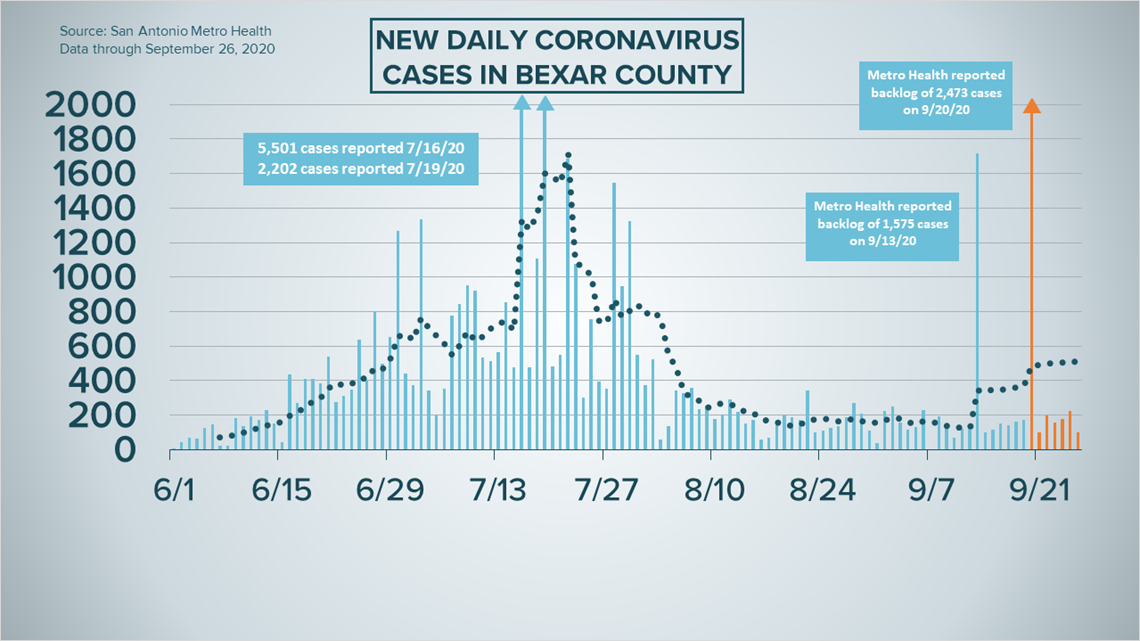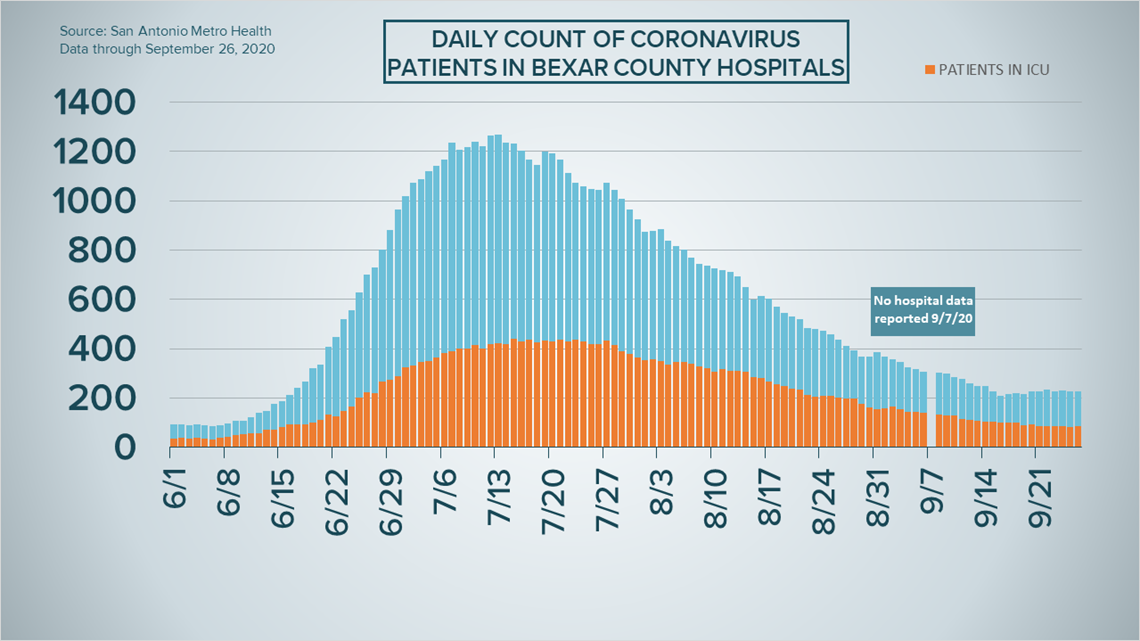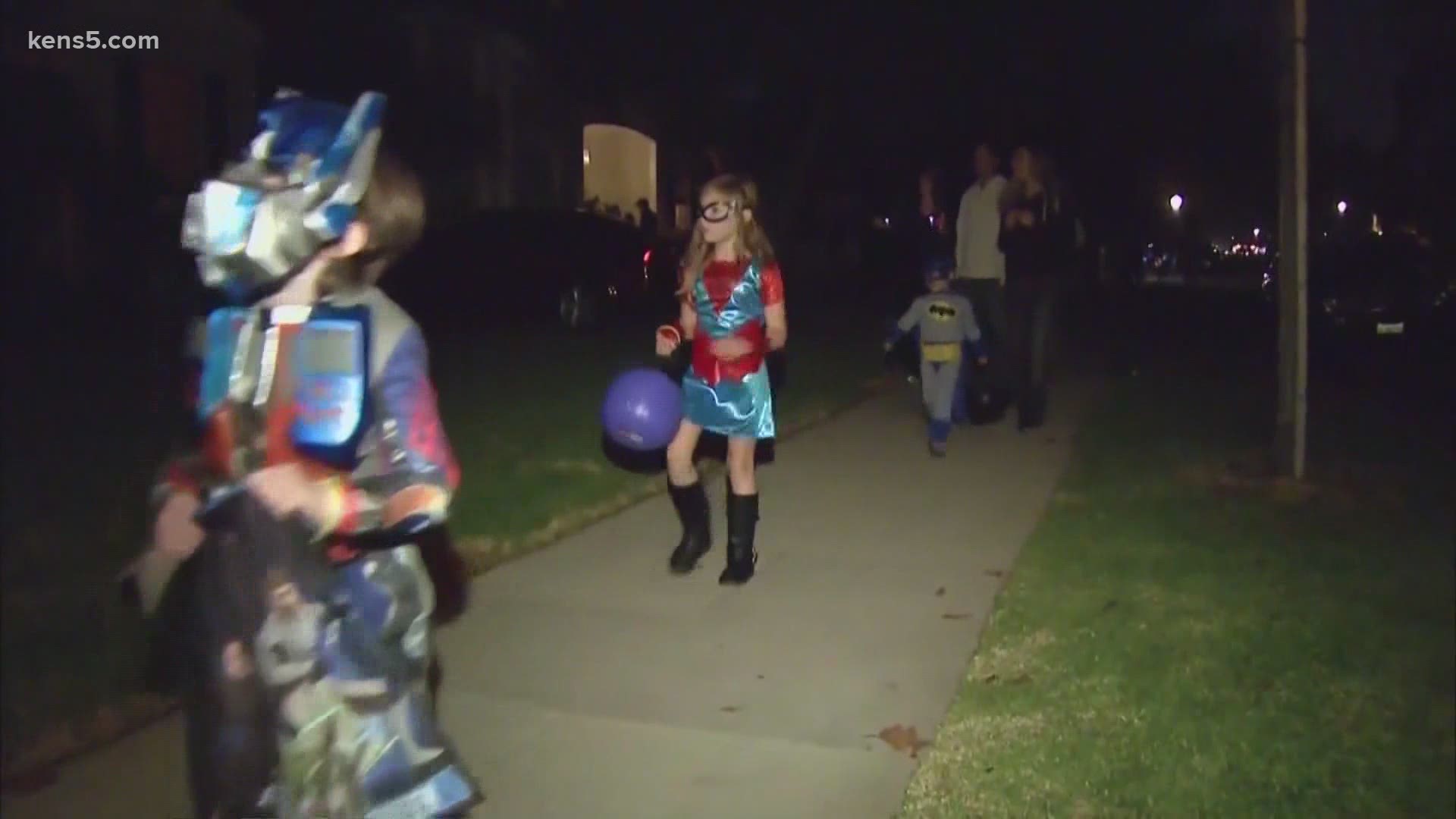SAN ANTONIO — We're tracking the latest numbers from the coronavirus pandemic in San Antonio and across Texas. Here are the latest numbers reported by Bexar and surrounding counties:
- Bexar County: 100 new cases were reported Saturday, bringing the total number for the county to 54,295. The county death toll rose to 1,074 as one additional fatality was reported.
- Comal County: The county reported 11 additional cases on Friday. No additional deaths were reported. There have been a total of 3,410 cases of COVID-19 in the county – including 2,694 confirmed cases – while 116 county residents have died. County officials say there are 235 active coronavirus cases, and 3,059 residents are considered recovered.
- Hays County: Officials in Hays County on Friday reported 61 new cases in the county and no additional virus-related deaths. As of Friday, there are a total of 5,871 lab-confirmed cases in the county (1,555 of which are active) while the death toll remains at 54. 4,262 residents have recovered from the virus.
How Bexar County is trending
We've tracked how many coronavirus cases have been confirmed in Bexar County from the time officials began reporting cases in March 2020. The graphic below shows the number of cases since June and charts those daily case numbers along a 7-day moving average to provide a more accurate picture of the overall coronavirus case curve in our area and the direction we're trending amid the pandemic.
On Saturday, Metro Health authorities uploaded their online coronavirus dashboards to reflect an additional 100 coronavirus cases in Bexar County. That brings the number of residents who have been diagnosed with the virus to at least 54,295 since the pandemic started.
Metro Health also tallied one more coronavirus-related fatality. In all, 1,074 local residents have died from COVID-19 complications.


There was minimal change in the county's hospitalization numbers on Saturday. A total of 228 Bexar County residents were receiving treatment for COVID-19 symptoms, which is three more than Friday. The number of patients on ventilators (30) is down from 36 on Friday, and the number of those in intensive care (85) is up from 83.


Coronavirus in Texas
The number of Texans who have tested positive for the coronavirus since the pandemic began grew by 4,886 on Saturday, according to the Texas Department of State Health Services. Of that increase, 3,283 are attributed to newly-reported coronavirus cases. Another 1,603 cases in the total stem from a number of backlogs throughout several counties:
- 4 older cases reported in Collin County.
- 884 older cases reported in Dallas County.
- 14 older cases reported in Galveston County.
- 599 older cases reported in Harris County.
- 84 older cases reported in Tarrant County.
- 2 older cases reported in Harrison County.
- 15 older cases reported in Nacogdoches County.
- 1 older case reported in Upshur County.
State officials also reported 121 new fatalities Saturday, bringing the total number of Texans who have died due to coronavirus to 15,485. In total, 733,438 Texans have tested positive for COVID-19. An estimated 649,580 have recovered.


The number of hospitalizations on Saturday fell slightly to 3,209, which amounts to 12 fewer Texans receiving treatment for COVID-19 symptoms in the last 24 hours.
The state's public school COVID-19 data dashboard had reported 1,212 new student cases for the week, bringing the total to 3,445 positive cases out of an estimated 1.1 million students learning in-person. The total count of on-campus staff cases rose to 2,850 after 660 new cases were reported. The data on the DSHS' website will be updated weekly on Wednesdays.
Meanwhile, the state on Thursday reported that, as of this week, there have been 86 cumulative COVID-19 cases between on-campus staff and students between San Antonio's three biggest districts. More on that can be found here.
The number does vary from figures reported by Nirenberg at Thursday evening's COVID-19 presser, where he said that a total of just 52 students and staff "across our area" have tested positive. It's unclear what accounts for the discrepancy.
Latest Coronavirus Headlines
- US colleges struggle to salvage semester amid COVID-19 outbreaks
- Tiny airborne particles may pose a big coronavirus problem
- China pushes emergency use of COVID vaccine despite concerns
- People are making their own desks due to coronavirus shortage
- Ammunition shortage spurred by coronavirus pandemic worsened by fears in social climate, gun pros say
- US hits 7 million COVID-19 cases as Fauci warns against pandemic fatigue
- Mark Cuban suggests $1,000 biweekly stimulus checks for 2 months
- Coronavirus restrictions and remote learning may hamper college student voter turnout
- Pope to UN: Use COVID crisis to come out better, not worse
- Courting During COVID: Navigating the dating world amid a global pandemic
Coronavirus symptoms
The symptoms of coronavirus can be similar to the flu or a bad cold. Symptoms include fever or chills, cough, shortness of breath or difficulty breathing, fatigue, muscle or body aches, headache, new loss of taste or smell sore throat, congestion or runny nose, nausea or vomiting and diarrhea, according to the Centers for Disease Control.
Most healthy people will have mild symptoms. A study of more than 72,000 patients by the Centers for Disease Control in China showed 80 percent of the cases there were mild.
But infections can cause pneumonia, severe acute respiratory syndrome, kidney failure, and even death, according to the World Health Organization. Older people with underlying health conditions are most at risk.
But infections can cause pneumonia, severe acute respiratory syndrome, kidney failure, and even death, according to the World Health Organization. Older people with underlying health conditions are most at risk.
Experts determined there was consistent evidence these conditions increase a person's risk, regardless of age:
- Chronic kidney disease
- COPD (chronic obstructive pulmonary disease)
- Obesity (BMI of 30 or higher)
- Immunocompromised state (weakened immune system) from solid organ transplant
- Serious heart conditions, such as heart failure, coronary artery disease, or cardiomyopathies
- Sickle cell disease
- Type 2 diabetes
The CDC believes symptoms may appear anywhere from two to 14 days after being exposed.
Human coronaviruses are usually spread...
- Between people who are in close contact with one another (within about 6 feet).
- Through respiratory droplets produced when an infected person coughs, sneezes or talks. These droplets can land in the mouths or noses of people who are nearby or possibly be inhaled into the lungs.
- Some recent studies have suggested that COVID-19 may be spread by people who are not showing symptoms.
Help stop the spread of coronavirus
- Stay home when you are sick.
- Eat and sleep separately from your family members
- Use different utensils and dishes
- Cover your cough or sneeze with your arm, not your hand.
- If you use a tissue, throw it in the trash.

